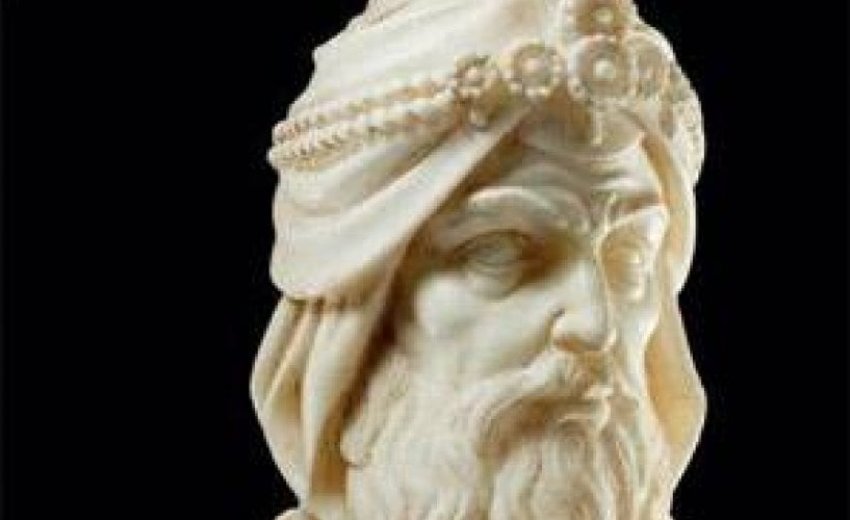In 2008, an auction took place in London where a marble bust of Maharaja Ranjit Singh, which was previously unknown, was sold. This remarkable sculpture, created in Europe during the 19th century, was estimated to be worth between $100,000 and $140,000. It bears a resemblance to the sculpture of Duleep Singh, crafted by the renowned artist John Gibson (1790-1866), which was sold for an astonishing £1.7 million in 2007.
Maharaja Ranjit Singh
Maharaja Ranjit Singh is widely recognized as one of the most prominent figures in Sikh history. According to Chirsty Campbell, a writer, he is described as "One of the greatest rulers of Northern India, who constructed an empire spanning from the Indian Ocean to the Himalayas." Although his reign was relatively short, lasting only forty years, it could not extend beyond the following generation. However, during the prosperous court of the Lion of Punjab, the arts and sciences flourished.
The rulership in Punjab
The Punjab was a flat plain that attracted invaders, rulers, and plunderers from Persia and Afghanistan who sought the wealth of the royal courts in Agra and Delhi. Over centuries, Greek, Christian, and Muslim invaders clashed both physically and culturally with the predominantly Hindu Punjab, shaping a cultural environment defined by this conflict. In the sixteenth century, the Sikh faith emerged within this milieu, giving rise to the unique Sikh warrior class known as the Khalsa by the end of the seventeenth century.
During Ahmed Shah Abdali's final two invasions into India, specifically targeting the Sikhs who had been pillaging his caravans, the Sikhs had reached their peak as a guerrilla force. They were organized into 12 confederacies, each holding informal power in different fiefdoms, and they often engaged in periodic warfare among themselves, particularly in the absence of external threats. The 12 confederacies recognized a single master in the form of the Buddha Dal, – an itinerant religious body. Even within this seemingly organized confederacy, chaos prevailed, and weary travellers and spies observed the unstable structure that marked the origins of the early Sikh courts.
His reign
The Sikh leadership was filled with internal conflicts and needed someone with exceptional character, bravery, and power to unite them. Ranjit Singh, despite his small stature, possessed all of these qualities. He surpassed the warring factions and brought them together through marriage, diplomacy, and strong leadership.
In 1799, Ranjit Singh, a determined 19-year-old chieftain, led his enthusiastic Sikh force to capture Lahore. This victory established their authority and gave them a legitimate standing. For the next 40 years, Ranjit Singh ruled as a Maharajah, successfully keeping the British at bay and defining the borders of Punjab, stretching from Sind to Tibet and almost reaching Delhi. He died at the peak of his power. Ranjit Singh represented the epitome of a Sikh king in the 19th century, and his reign is considered the pinnacle of Sikh nationhood and aspirations for sovereignty.
Life in the Sikh confederacies was harsh, plagued by internal conflicts, frequent murders, and kidnappings. Ranjit Singh would conquer rival territories, eliminate their leaders, marry the widows, and absorb their people, property, and women into his own dominion. He paid little attention to matters of art.
His early leadership
During the early years of Ranjit Singh's rise to power in Punjab, miniature painting, which was previously practised by the Mughals, had nearly disappeared. However, in the Punjab Hills, artists continued to paint for local princes and their courts. The Sikhs occasionally interfered in the affairs of the Hills during the 18th century, but their actions were mostly opportunistic. They would loot states instead of occupying them, and they didn't aim to establish permanent Sikh control.
In 1809, the Sikh governor replaced Sansar Chand of Kangra as the ruler, and later Kangra was annexed under Ranjit Singh's rule. In 1811, Kotla, a region connected to Guler and Nurpur, became a Sikh enclave, and two years later, Guler itself was taken over. The Punjab Hills were now ripe for the emergence of a new school of art, thanks to favourable conditions of peace, prosperity, and patronage. The Sikh art of the late 19th century, created for the court, was bold and free from traditional constraints. It combined vibrant colours, compelling narratives, and raw honesty. One observer from the 19th century even described the unique colour palette of Punjab as "warm, rich, and fearless."
Uniting Punjab and the Flourishing Sikh Art
In 1830, Maharaja Ranjit Singh was fifty years old, and he had achieved more than any other Sikh leader. He skillfully brought the misls under his control, intimidated his neighbours, and outsmarted the British. Through his efforts, he united the Punjab region and established a powerful Sikh state. During this era of relative security and stability, a combination of a wealthy patron and rich artistic traditions resulted in a remarkable period of Sikh art flourishing at the court.
Historians hold differing opinions regarding the limited presence of sculpture in Sikh arts, whether it be in the form of intricate ivory carvings or statues and monuments. Two main arguments emerge: one revolves around theological opposition, while the other emphasizes the need for prolonged political stability for the three-dimensional form to emerge. Consequently, representations of Ranjit Singh in three dimensions from the 19th century are exceptionally rare. Only three ivory sculptures are known to exist, along with a silver centrepiece portraying Ranjit Singh mounted on a war elephant, now housed in the Lahore Museum.
It is possible that Ranjit Singh himself was keenly aware of his physical appearance and deliberately refrained from immortalizing it in marble. It was only after his death that his successors, eager to associate themselves with him, or the new colonial rulers seeking to romanticize his reign, commissioned such sculptures. The piece being offered this October may very well have originated from this context.
Under his rule, Sikhism flourished, and he actively supported the development of gurdwaras (Sikh temples) and the preservation of Sikh scriptures. Maharaja Ranjit Singh's contributions left an indelible mark on Sikh history, making him a revered figure among Sikhs to this day.
*Based on an article by Christy Campbell in Bonhams magazine on 4th September 2008

